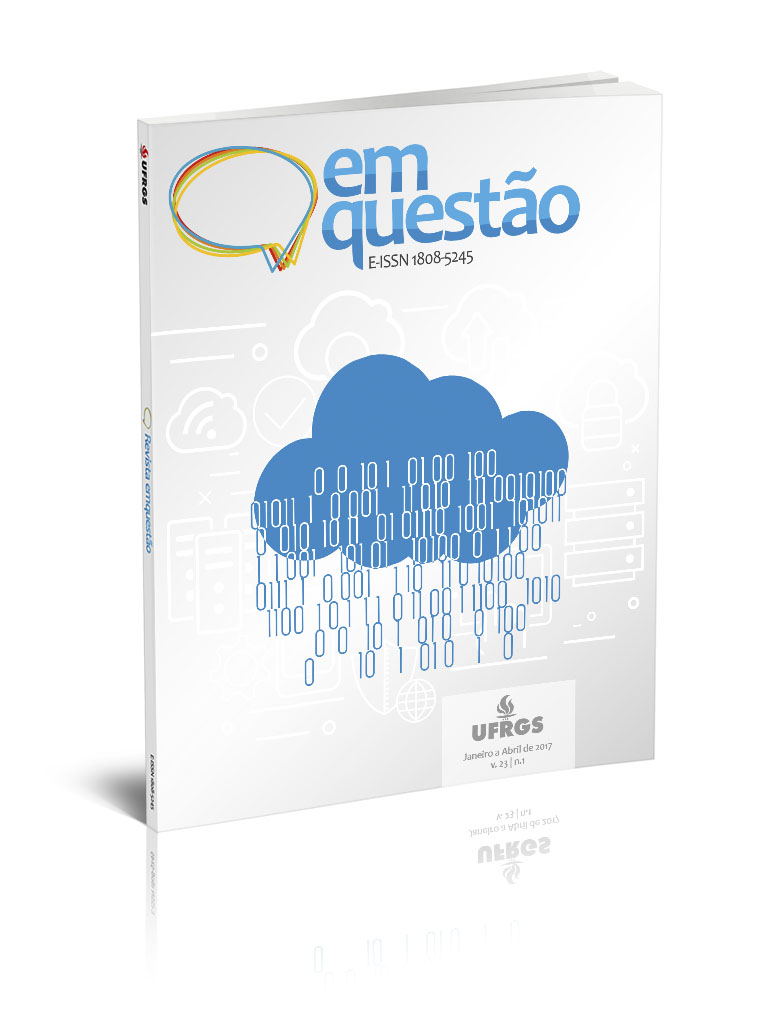Semantic interoperability among museum collections: the case for image and sound museums
DOI:
https://doi.org/10.19132/1808-5245231.113-128Keywords:
Semantic interoperability. Photography archives. Museum documentation. Museum of Sound and Image. Documentary analysis of photographs.Abstract
Interoperability among information systems presupposes using standards and protocols that facilitate data exchange among museums. From this stance, this article aims to look at how similar museums describe information in their archives and how they communicate with each other. Descriptions of historical photographs in image and sound museums were analysed using metadata from their catalogues, and results have shown that there is only a limited amount of metadata shared among these institutions. Research has also highlighted denominative and conceptual ambiguities that hinder both information sharing and retrieval among said institutions, as well as user access to information. The paper concludes that there is a need for interoperable forms of managing and documenting museum collections, which will then increase ability to preserve and perpetuate human knowledge.Downloads
References
ANDRADE, M. C.; CERVANTES, B. M. N. A contribuição da organização do conhecimento para a interoperabilidade: alternativas para repositórios institucionais. Informação @ Profissões, Londrina, v. 1, n. 1/2, p. 152-170, jun./dez. 2012. Disponível em: <http://www.uel.br/revistas/uel/index.php/infoprof/article/view/14593>. Acesso em: 23 set. 2013.
ARAÚJO, C. A. A. Arquivologia, Biblioteconomia, Museologia e Ciência da
Informação: o diálogo possível. Brasília: Briquet de Lemos, 2014.
BARBUY, H. Documentação museológica e pesquisa em museus. In: MUSEU DE ASTRONOMIA E CIÊNCIAS AFINS (MAST). Documentação em Museus. Rio de Janeiro: MAST, 2008. p. 33-43. (MAST Colloquia, v. 10). Disponível em: <http://www.mast.br/livros/mast_colloquia_10.pdf>. Acesso em: 19 ago. 2016.
BARITÉ, M. Diccionario de Organización del Conocimiento: clasificación, Indización, Terminología. 6. ed. Montevideo: CSIC, 2015. 212p.
BOTTALLO, M. Diretrizes em documentação museológica. In: ASSOCIAÇÃO CULTURAL DE AMIGOS DO MUSEU CASA DE PORTINARI. Documentação e conservação de acervos museológicos: diretrizes. Brodowski: Associação Cultural de Amigos do Museu Casa de Portinari; São Paulo: Secretaria de Estado da Cultura de São Paulo, 2010. p. 48-79.
BRASCHER, M.; CAFÉ, L. Organização da informação ou organização do conhecimento. In: ENCONTRO NACIONAL DE PESQUISA EM CIÊNCIA DA INFORMAÇÃO, 9., 2008, São Paulo. Anais... São Paulo: USP, 2008. p. 1-14.
CAMPOS, M. L. C; CAMPOS, M. L. A.; CAMPOS, L. M. Web semântica e a gestão de conteúdos informacionais. In. MARCONDES, C. H. et al. Bibliotecas digitais: saberes e práticas. Salvador: UFBA; Brasília: IBICT, 2006. p. 55-73.
CINTRA, A. M. M. et al. Para entender as linguagens documentárias. 2. ed. São Paulo: Polis, 2002. 92p. (Coleção Palavra-chave).
CARRETERO PÉREZ, A. et al. Normalización documental de museos: elementos para una aplicación informática de gestión museográfica. Madrid: Ministerio de Educación y Cultura, 1998. Disponível em: <http://www.mecd.gob.es/cultura-mecd/areas-cultura/museos/mc/ndm/capitulos.html>. Acesso em: 19 ago. 2016.
FERREZ, H. D. Documentação museológica: teoria para uma boa prática. In: CADERNOS de ensaios, nº 2. Rio de Janeiro: Minc/Iphan, 1994. p. 64-73.
LEITE, M. M. Retratos de família: leitura da fotografia histórica. 3. ed. São Paulo: EdUSP, 2001.
MARCONDES, C. H. Metadados: descrição e recuperação de informações na Web. In: MARCONDES, C. H. et al. (Orgs.). Bibliotecas digitais: saberes e práticas. 2. ed. Salvador: EDUFBA; Brasília: IBICT, 2006. p. 95-111.
MOURA, M. A. Interoperabilidade semântica e ontologia semiótica: a construção e o compartilhamento de conceitos científicos em ambientes colaborativos online. Informação & Informação, Londrina, v. 16, n. 3, p. 165-179, jan./jun. 2011. Disponível em: <http://www.uel.br/revistas/uel/index.php/informacao/article/view/10392/0>. Acesso em: 18 out. 2013.
ORTEGA, C. D. Fundamentos da organização da informação frente à produção de documentos. Transinformação, Campinas, v. 20, n. 1, p. 7-15, jan./abr. 2008. Disponível em: <http://periodicos.puc-campinas.edu.br/seer/index.php/transinfo/article/view/537>. Acesso em: 14 ago. 2012.
PADILHA, R. C. O museu como espaço de pesquisa: proposta para descrição do acervo fotográfico histórico. 2014. 135 f. Dissertação (Mestrado em Ciência da Informação) - Programa de Pós-Graduação em Ciência da Informação, Universidade Federal de Santa Catarina, Florianópolis, 2014. Disponível em: <https://repositorio.ufsc.br/bitstream/handle/123456789/123241/325935.pdf?sequence=1&isAllowed=y>. Acesso em: 19 ago. 2016.
PADILHA, R. C.; CAFE, L. M. A. Organização de acervo fotográfico histórico: proposta de descrição. InCID: Revista de Ciência da Informação e Documentação, Ribeirão Preto, v. 5, n. 1, p. 90-111, mar./ago. 2014. Disponível em: <http://www.revistas.usp.br/incid/article/view/73527/82240>. Acesso em: 19 ago. 2016.
SMIT, J. W. A interoperabilidade semântica entre os diferentes sistemas de informação no museu. In: SEMINÁRIO SERVIÇOS DE INFORMAÇÃO EM MUSEUS, 1., 2011, São Paulo. Anais... São Paulo: Pinacoteca do Estado, 2011. p. 33-41. Disponível em: <http://biblioteca.pinacoteca.org.br:9090/publicacoes/index.php/sim/article/view/8/7>. Acesso em: 19 ago. 2016.
Downloads
Published
How to Cite
Issue
Section
License
Copyright (c) 2016 Em Questão

This work is licensed under a Creative Commons Attribution 4.0 International License.
Authors who publish with this journal agree to the following terms:
Authors will keep their copyright and grant the journal with the right of first publication, the work licensed under License Creative Commons Attribution (CC BY 4.0), which allows for the sharing of work and the recognition of authorship.
Authors can take on additional contracts separately for non-exclusive distribution of the version of the work published in this journal, such as publishing in an institutional repository, acknowledging its initial publication in this journal.
The articles are open access and free. In accordance with the license, you must give appropriate credit, provide a link to the license, and indicate if changes were made. You may not apply legal terms or technological measures that legally restrict others from doing anything the license permits.













